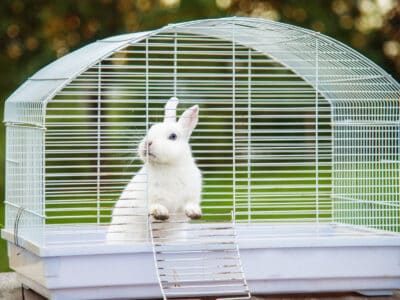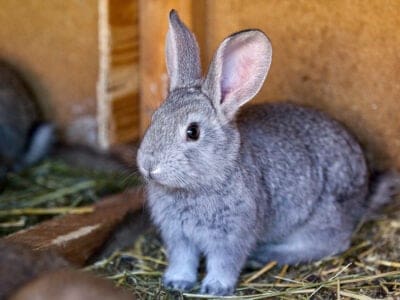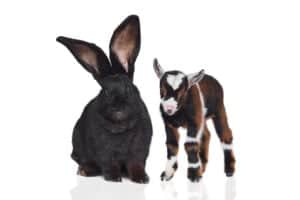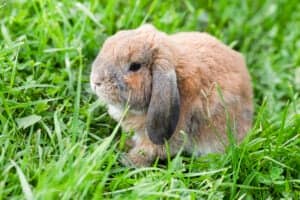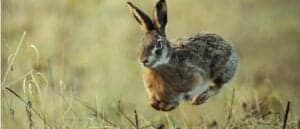Are Rabbits (Bunnies) Rodents?
@media (min-width: 481px) {
.mobile-top-content {
display: none;
}
}
#mobileTopContentCTACarouselControls { overflow: hidden; text-overflow: ellipsis; white-space: nowrap; }
.mobile-top-content .more { color: #fff; }
.mobile-top-content a { color: #fff; text-decoration: underline; }
.mobile-top-content a:hover { color: #fff; text-decoration: underline; }
@media (max-width: 480px) {
.mobile-top-content {
background-color: #06a10b;
color: #fff;
text-align: center;
/*height: 60px;
padding-top:5px;*/
font-size:80%;
/* display: block; */
margin: 0px -30px;
}
}
Rabbits (also known as bunnies) are small mammals that are widespread worldwide. In the wild, they live in burrows across a range of habitats – such as grasslands, forests, wetlands, and deserts. However, they are also domesticated and are often kept as pets. Rabbits are best known for their long ears and unique hopping motion which they use to move around. When talking about rabbits, one of the most frequently asked questions is “are rabbits rodents,” and the truth is more complex and interesting than expected.
This article will talk about what makes a rodent a rodent and find out whether rabbits fit into that category. It’ll also discuss what is unique about rabbits and what makes them such great pets. So, join us as we discover whether rabbits really are rodents or not!
What are Rodents?
Rodents are animals in the Rodentia order, which is the largest order of mammals. In fact, more than 40% of the mammals in the world are rodents. Rodents are typically animals with short limbs and stout bodies, and many of them have long tails. However, the main defining feature of all rodents is their incisor teeth. This is because rodents have four (two upper and two lower) incisors that never, ever stop growing. As their incisors continually grow, rodents must gnaw almost constantly to prevent their teeth from becoming too long for their mouths. Although you might think that all that gnawing would make their teeth blunt and ineffective, rodents have a handy little trick to prevent this from happening – self-sharpening teeth.
The self-sharpening feature of rodents’ teeth is caused by what their teeth are made from – dentin and enamel. The front of their teeth is coated in enamel which is tougher than dentin which is on the rear of their teeth. The softer dentin wears away quicker than the tougher enamel and creates a chisel-shaped edge. This unique shape means that the teeth are always super sharp. Most rodents are herbivores and eat leaves, bark, plants, seeds, grains, and fruit. However, some are omnivores and eat small insects and birds too. Along with the obvious rats and mice, other rodents include beavers, porcupines, prairie dogs, and capybaras (the largest rodents in the world).
Are Rabbits (Bunnies) Rodents?
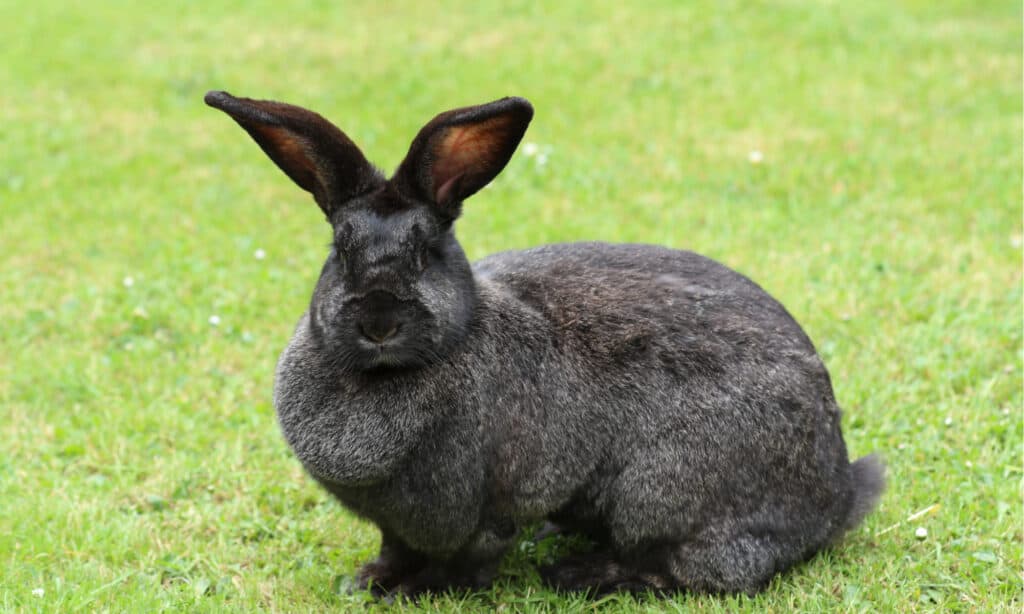
Stephen Clarke/Shutterstock.com
Rabbits are not rodents. Although their teeth are similar to those of rodents, they are not the same. Rabbits also have a strictly herbivorous diet. They have long back legs compared to the short limbs of rodents. They also have other distinct features – such as long ears and a complete lack of paw pads. Rabbits are also classified differently from rodents, although this wasn’t the case one hundred years ago.
But Rabbits Teeth keep Growing too
One of the main reasons that rabbits are often mistaken for rodents is because they share that main defining feature of rodents that we mentioned earlier – constantly growing teeth. However, although rabbits share this feature, there are still some distinct differences that set the two apart. The most important thing is that rabbits have an extra pair of upper incisors. These additional incisors are tiny and peg-shaped. They are tucked away behind the main set of incisors which makes them difficult to spot.
Additionally, while rodents’ teeth are coated with enamel on the front and dentin on the rear, rabbits’ teeth are coated with enamel on both the front and the back. So while rodents can achieve that unique chisel-shaped edge that is self-sharpening, rabbits cannot.
Were Rabbits Originally Rodents?
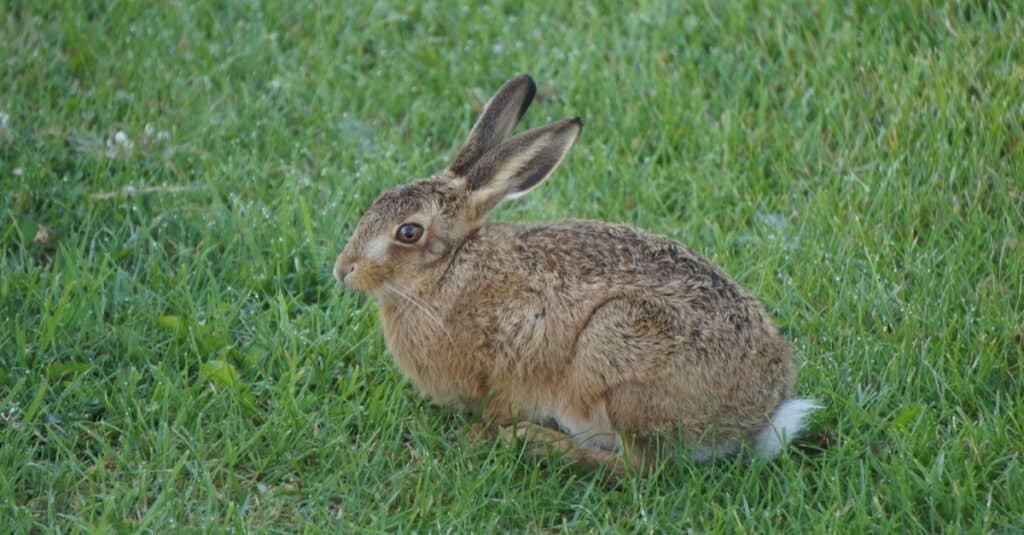
E Gatehouse/Shutterstock.com
Incredibly, rabbits were originally classified as rodents in the Rodentia order until 1912. As we’ve just discussed, the similarities between their teeth and those of rodents were a major factor in rabbits being mistaken for rodents. However, eventually, rabbits were reclassified into the Lagomorpha order, which is comprised of rabbits, hares, and pikas. The Lagomorpha order is split into two family groups – Leporidae (rabbits and hares) and Ochotonidae (pikas). There are 109 living species in the Lagomorpha order, of which 42 are rabbits.
Lagomorphs are widespread worldwide and are found on every continent except Antarctica. One of the other main differences between lagomorphs and rodents is that they are strictly herbivorous and feed entirely on grass and leafy plants. Rabbits’ diet contains a lot of cellulose which is difficult to digest. However, rabbits solve this problem by eating their droppings so that they can further digest what they have eaten. This is an alternative form of digestion to “chewing the cud,” which animals such as cows and sheep do to digest what they have eaten.
What else is Unique about Rabbits?
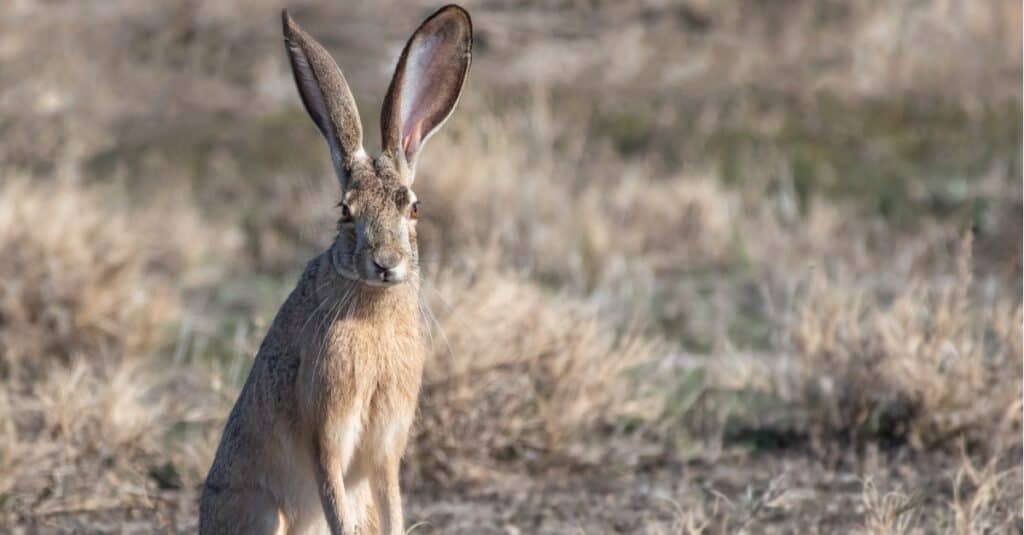
iStock.com/Supercaliphotolistic
Rabbits are some of the most fascinating and unique animals – which is one of the reasons that they make such good pets. Rabbits have long ears, short tails, and a typically egg-shaped body and are unusual in that females are larger than males. All members of the Lagomorpha order have long ears, which are used to detect predators. However, rabbits and hares have ears that are longer than they are wide. The greater the surface area of the ear in relation to the size of the body, the better predators can be detected from further away. In contrast, smaller ears require the predators to be closer before they can be detected.
However, one of the most important things to rabbits – particularly in the wild – is speed and agility to escape from predators such as foxes, coyotes, and badgers. To help them achieve this, they have long hind legs with well-developed muscles. Their hind legs are longer than their front legs, which allows them to produce the hopping movement. Interestingly, rabbits lack paw pads and instead have coarse, compressed hair on their feet to provide protection. Hares have longer hind legs than rabbits which allows them to run faster.
More from A-Z Animals
.more-snake-card-image { max-height:140px !important; }
@media (min-width: 481px) {
.mobile-top-content {
display: none;
}
}
#mobileTopContentCTACarouselControls { overflow: hidden; text-overflow: ellipsis; white-space: nowrap; }
.mobile-top-content .more { color: #fff; }
.mobile-top-content a { color: #fff; text-decoration: underline; }
.mobile-top-content a:hover { color: #fff; text-decoration: underline; }
@media (max-width: 480px) {
.mobile-top-content {
background-color: #06a10b;
color: #fff;
text-align: center;
/*height: 60px;
padding-top:5px;*/
font-size:80%;
/* display: block; */
margin: 0px -30px;
}
}
Rabbits (also known as bunnies) are small mammals that are widespread worldwide. In the wild, they live in burrows across a range of habitats – such as grasslands, forests, wetlands, and deserts. However, they are also domesticated and are often kept as pets. Rabbits are best known for their long ears and unique hopping motion which they use to move around. When talking about rabbits, one of the most frequently asked questions is “are rabbits rodents,” and the truth is more complex and interesting than expected.
This article will talk about what makes a rodent a rodent and find out whether rabbits fit into that category. It’ll also discuss what is unique about rabbits and what makes them such great pets. So, join us as we discover whether rabbits really are rodents or not!
What are Rodents?
Rodents are animals in the Rodentia order, which is the largest order of mammals. In fact, more than 40% of the mammals in the world are rodents. Rodents are typically animals with short limbs and stout bodies, and many of them have long tails. However, the main defining feature of all rodents is their incisor teeth. This is because rodents have four (two upper and two lower) incisors that never, ever stop growing. As their incisors continually grow, rodents must gnaw almost constantly to prevent their teeth from becoming too long for their mouths. Although you might think that all that gnawing would make their teeth blunt and ineffective, rodents have a handy little trick to prevent this from happening – self-sharpening teeth.
The self-sharpening feature of rodents’ teeth is caused by what their teeth are made from – dentin and enamel. The front of their teeth is coated in enamel which is tougher than dentin which is on the rear of their teeth. The softer dentin wears away quicker than the tougher enamel and creates a chisel-shaped edge. This unique shape means that the teeth are always super sharp. Most rodents are herbivores and eat leaves, bark, plants, seeds, grains, and fruit. However, some are omnivores and eat small insects and birds too. Along with the obvious rats and mice, other rodents include beavers, porcupines, prairie dogs, and capybaras (the largest rodents in the world).
Are Rabbits (Bunnies) Rodents?

Stephen Clarke/Shutterstock.com
Rabbits are not rodents. Although their teeth are similar to those of rodents, they are not the same. Rabbits also have a strictly herbivorous diet. They have long back legs compared to the short limbs of rodents. They also have other distinct features – such as long ears and a complete lack of paw pads. Rabbits are also classified differently from rodents, although this wasn’t the case one hundred years ago.
But Rabbits Teeth keep Growing too
One of the main reasons that rabbits are often mistaken for rodents is because they share that main defining feature of rodents that we mentioned earlier – constantly growing teeth. However, although rabbits share this feature, there are still some distinct differences that set the two apart. The most important thing is that rabbits have an extra pair of upper incisors. These additional incisors are tiny and peg-shaped. They are tucked away behind the main set of incisors which makes them difficult to spot.
Additionally, while rodents’ teeth are coated with enamel on the front and dentin on the rear, rabbits’ teeth are coated with enamel on both the front and the back. So while rodents can achieve that unique chisel-shaped edge that is self-sharpening, rabbits cannot.
Were Rabbits Originally Rodents?

E Gatehouse/Shutterstock.com
Incredibly, rabbits were originally classified as rodents in the Rodentia order until 1912. As we’ve just discussed, the similarities between their teeth and those of rodents were a major factor in rabbits being mistaken for rodents. However, eventually, rabbits were reclassified into the Lagomorpha order, which is comprised of rabbits, hares, and pikas. The Lagomorpha order is split into two family groups – Leporidae (rabbits and hares) and Ochotonidae (pikas). There are 109 living species in the Lagomorpha order, of which 42 are rabbits.
Lagomorphs are widespread worldwide and are found on every continent except Antarctica. One of the other main differences between lagomorphs and rodents is that they are strictly herbivorous and feed entirely on grass and leafy plants. Rabbits’ diet contains a lot of cellulose which is difficult to digest. However, rabbits solve this problem by eating their droppings so that they can further digest what they have eaten. This is an alternative form of digestion to “chewing the cud,” which animals such as cows and sheep do to digest what they have eaten.
What else is Unique about Rabbits?

iStock.com/Supercaliphotolistic
Rabbits are some of the most fascinating and unique animals – which is one of the reasons that they make such good pets. Rabbits have long ears, short tails, and a typically egg-shaped body and are unusual in that females are larger than males. All members of the Lagomorpha order have long ears, which are used to detect predators. However, rabbits and hares have ears that are longer than they are wide. The greater the surface area of the ear in relation to the size of the body, the better predators can be detected from further away. In contrast, smaller ears require the predators to be closer before they can be detected.
However, one of the most important things to rabbits – particularly in the wild – is speed and agility to escape from predators such as foxes, coyotes, and badgers. To help them achieve this, they have long hind legs with well-developed muscles. Their hind legs are longer than their front legs, which allows them to produce the hopping movement. Interestingly, rabbits lack paw pads and instead have coarse, compressed hair on their feet to provide protection. Hares have longer hind legs than rabbits which allows them to run faster.

